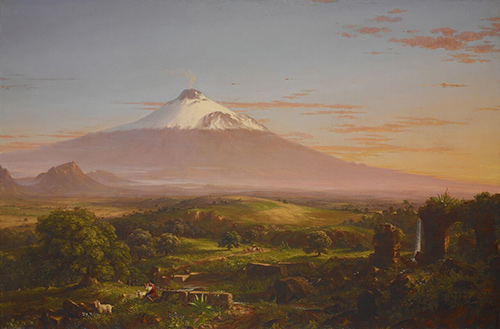Although known primarily for his development of the electromagnetic telegraph, Samuel F.B. Morse actually began his career as an artist. The inventor’s artistic endeavors are the subject of an exhibition in Arkansas.
Leave it to Samuel Morse to produce a lovely painting that brought together his artistic and scientific pursuits. Most don’t realize that the famous inventor was actually an artist — a fact that the Crystal Bridges Museum of American Art in Bentonville, Arkansas, hopes to illuminate.
“Samuel F. B. Morse’s Gallery of the Louvre and the Art of Invention” opened on January 23 and will be on view through April 18. As its title suggests, the show predominantly focuses on one particular piece by Morse, his monumental “Gallery of the Louvre” — a piece in which the artist chose masterpieces from the Louvre Museum’s collection and depicted them as though they were being exhibited together. The picture reads like a “Grand Tour” masterpiece, showcasing the spoils of a wealthy Englishman having just returned from journeys abroad.

Samuel Morse, “View of Mount Etna,” 1842, oil on canvas, 32 x 48 in. (c) Crystal Bridges Museum of American Art 2016
The museum notes, “‘Gallery of the Louvre’ is a painting of visual and technical complexity, bringing together Morse’s artistic and scientific pursuits and revealing an adoration of the old masters as well as the artist’s Calvinist worldview and conservative cultural politics. Morse showed ‘Gallery of the Louvre’ as a single-painting exhibition only twice—in New York City and New Haven, Connecticut—where it was praised by critics and connoisseurs but failed to capture the imagination of the public. Crushed by the lukewarm public response, Morse soon ceased painting altogether, moving on to his more successful experiments with the electromagnetic telegraph, and, most famously, Morse code. Today, after six months of conservation and two years of scholarly study, this impressive work of American art reveals Morse’s fascination with the transmission of information: in both his desire to share masterworks from Europe with the American people, and his invention of Morse code.”
To learn more, visit the Crystal Bridges Museum of American Art.
This article was featured in Fine Art Today, a weekly e-newsletter from Fine Art Connoisseur magazine. To start receiving Fine Art Today for free, click here.








